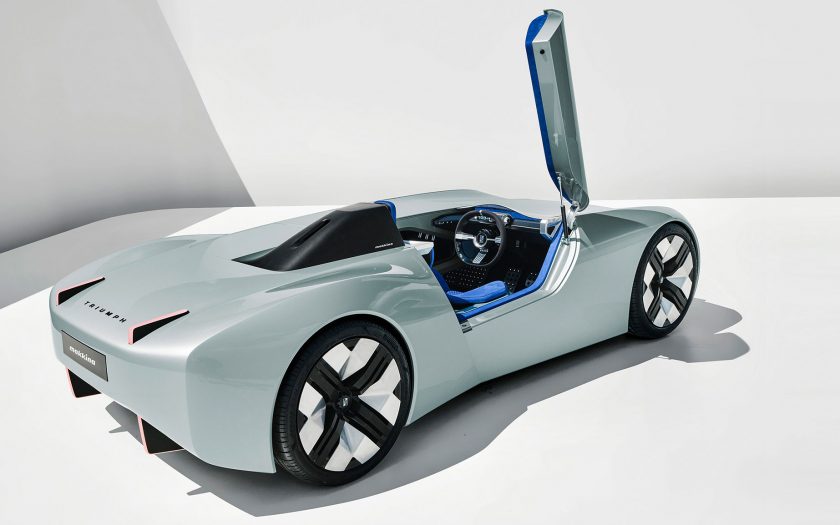CAR DESIGNERS ARE FOREVER revisiting the past in search of inspiration. Latest in a long line of retro designs is the Triumph TR25 concept car, designed by London-based consultancy Makkina.
As is so often the case, the TR25 is a “what if” vision of an alternative future for a model long since passed.
Inspiration for this latest design came from an unlikely source: the svelte, streamlined “Jabbeke” Triumph TR2, a one-off record-breaker built by British manufacturer Triumph in 1953.
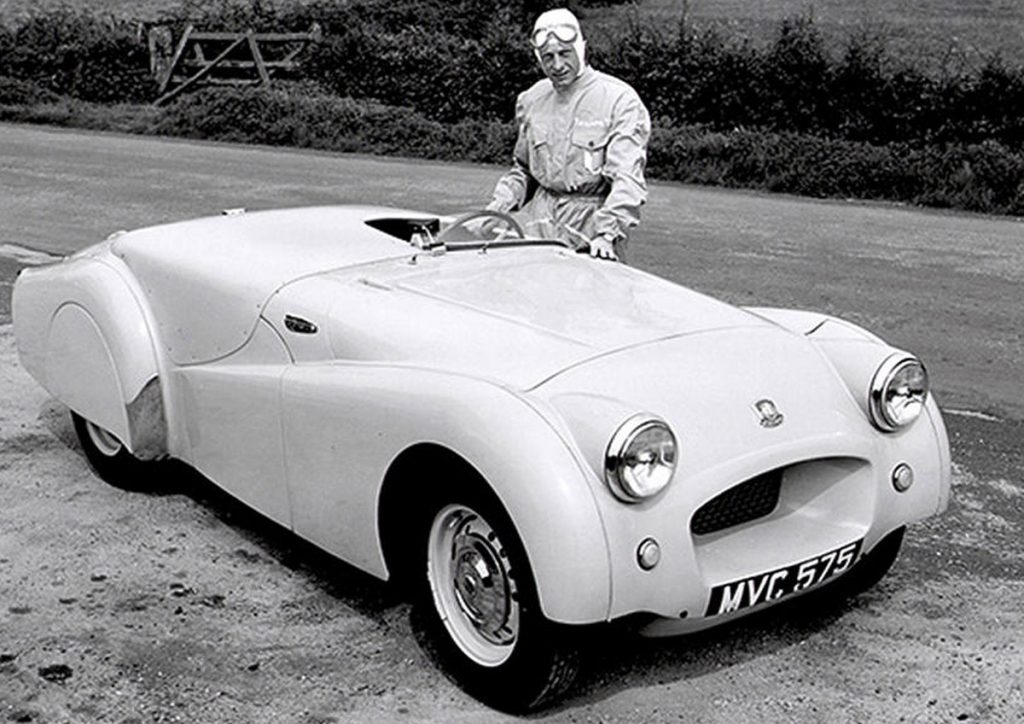
The Jabbeke Triumph once held the world speed record for the under-2-litre engine class, reaching a tad under 125mph on the Jabbeke highway in Belgium. That car is now in the British Motor Museum in Warwickshire.
The TR25 concept car is a dramatically simple update of the original, making the most of the minimalism afforded by an electric platform.
It sits on large 21-inch wheels, pushed right to the edge of the body and shares the footprint and all dimensions of the BMW i3 on which it is based.
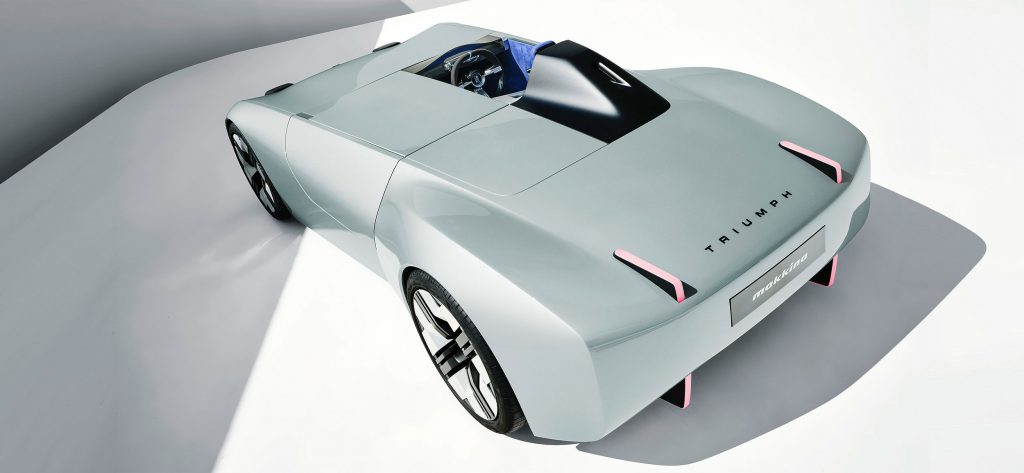
The concept shares the 42.2kWh battery pack and 184bhp electric motor with the BMW i3 but, because it’s much lighter, it’s considerably faster than a standard i3S.
Makkina says the TR25 can dispatch the zero to 100km/h sprint in just 5.2 seconds and hit a top speed of 185km/h. By comparison, an i3S musters respective performance figures of 6.9 seconds and 160km/h. The concept’s lightweight carbon fibre construction and aerodynamic panelling also give it a slightly higher maximum range of 305km compared to 280km for the i3S.
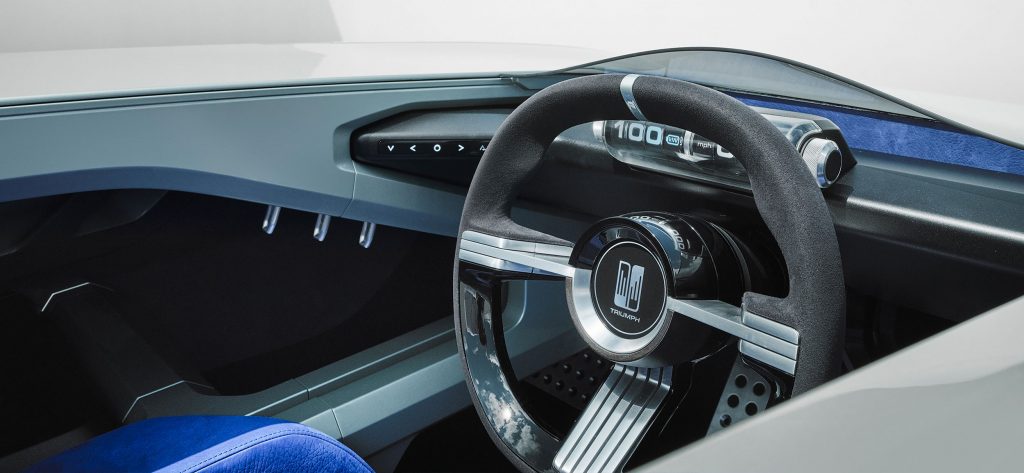
The designer stresses that this is purely a design exercise.
Custodian of the Triumph brand, BMW, has announced it has no plans to produce the car, even though it officially bears the name of the Triumph Motor Company (and the designer must have sought and received approval to use the brand name). The Triumph badge the TR25 wears is an updated version of the original Triumph shield-like badge.
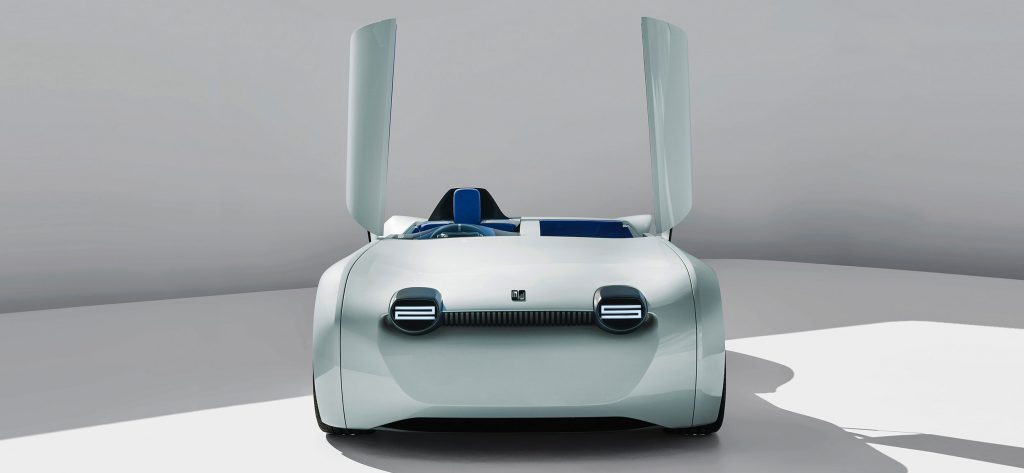
Optimists suggest that BMW’s involvement, as both the badge-holder and platform builder, hints at a possible future for the TR25 beyond a museum curio.
